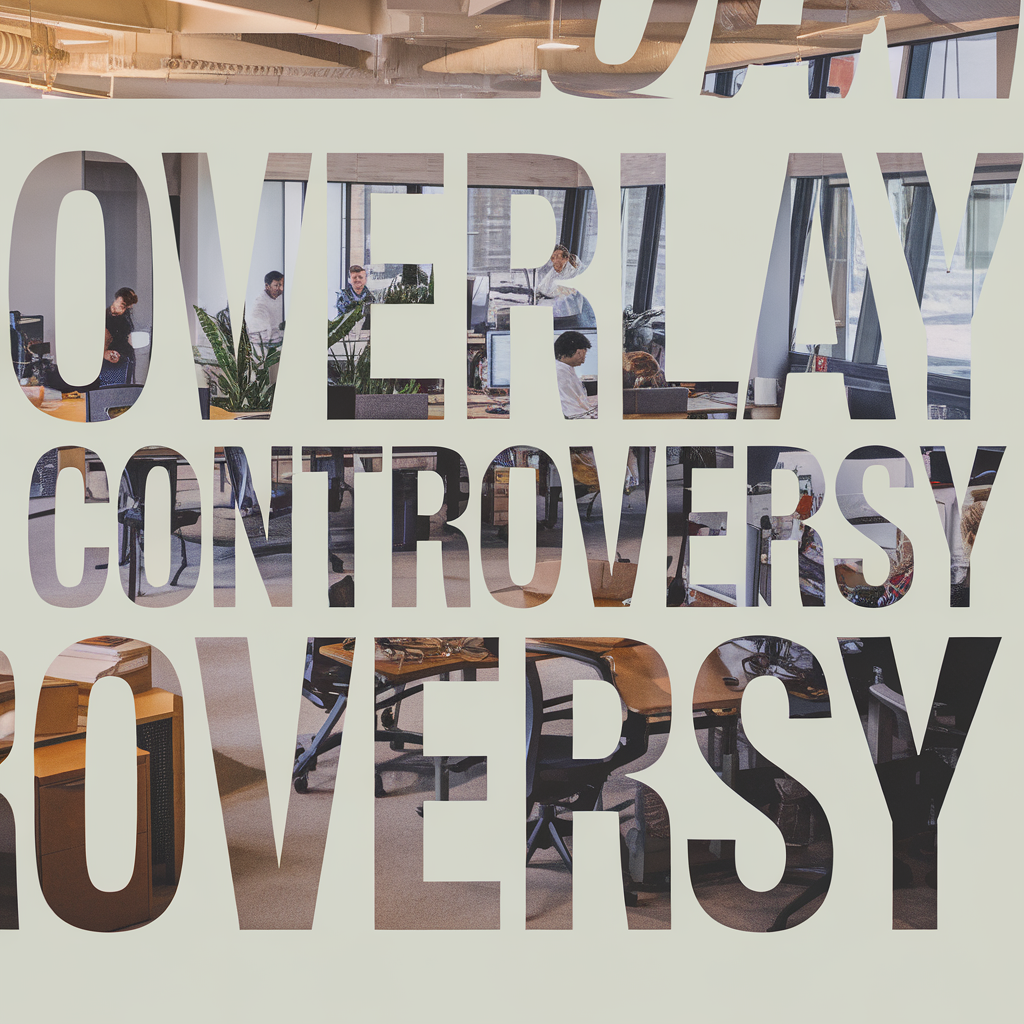Hello there, Adventure-preneur! Ever felt like you're in a wild, dense jungle called 'visual impairment challenges'? The twisting paths, the shimmering mirage of solutions shining on the horizon, and oh those alarming pitfalls of failed attempts? Phew! Quite a ride, right? Don't let your gears grind yet. We've got you covered with that reliable flashlight of knowledge and wisdom. This trusty guide you have is like a trusty GPS-riented (pun intended!) map that'll help navigate through this overwhelming territory, making sense of companion tools and strategic solutions for entrepreneurs embracing these digital woods. Taking you from confusion to clarity, we're aiming for comprehensive comparisons that might just make your decision-making as smooth as snaking down a river… on a super comfortable inflatable ring. Sounds interesting? We bet it does! From exploring innovative solutions for visual impairment complications, meticulously analyzing features of supportive tech tools, to answering your burning queries – we're in it together, and we promise it'll be an insightful joyride. C'mon then! Let's don our explorer hats and tackle these challenges head on! Fear not, for every twist and turn in this journey promises newfound understanding and enlightenment. Are you ready to join this brave journey in overcoming visual impairment challenges as intrepid entrepreneur-explorers? Spread out your map and let's dive into this uncharted terrain together – one tagline blend at a time! (P.s – don't forget to bring your water bottle and adventurous spirit!)
Understanding Visual Impairment Challenges

Running a tight-rope doesn't stand chance against the visual impairment challenges faced by entrepreneurs in technology. Yep, you read that right. When it comes to creating or using technology that caters to the visually impaired, it's like trying to navigate a maze blindfolded. Think about it. Assuming you're a fully-sighted person, imagine switching on your device, eager to test a new software. But hey, wait a minute – there's no visual output! Only sound clues and braille. Feels like a scene from Mission Impossible, right? Well, my daring reader, that’s what visually impaired folks often deal with when diving into the deep end of the technology pool. Therefore, understanding these seemingly daunting visual impairment challenges becomes utterly necessary for our tech-savvy entrepreneurs. If we dig deeper, these challenges mainly revolve around two big monsters: accessibility and usability issues. On one hand, we have accessibility issues lurking in the murky corners, working tirelessly to create barriers. This monster is particularly adept at turning simple tasks, like browsing a website or using an app, into Herculean tasks. It's like keeping a juicy burger just out of reach – you can smell its delicious aroma, but can't quite grasp it. On the flip side, we've got usability issues. Here we're talking about an avalanche of unorganized data or complicated navigation. Yep, even after we brilliantly tackle accessibility, one false step and wham! Stuck again. Therefore, brushing up on these key similarities and differences doesn't just brighten up your day as an entrepreneur; you're really holding a magic lamp that embodies transparency and openness. Your understanding can be the difference between leading someone out of that tangled maze or leaving them stranded. Remember, pal, knowledge isn't just power—it's a lifeline. And who knows who might need it next?
Exploring Different Options for Visual Impairment Solutions
Hey there, pals in entrepreneurship! Not too long ago we took a deep dive into the rapidly evolving world of tech solutions for visual impairment challenges. So are you fired up to explore the wonders and pitfalls of these technological marvels further with us? Technology really is magic, right? Let's cast our gaze over to the first bunch of solutions – text to speech (TTS) tools. A real godsend for those working in the realm of visually impaired colleagues or clients, TTS tools are just as handy as a GPS guiding you through unfamiliar woodland. They form cohesive audio narratives from often cluttered virtual landscapes, making navigation a whole lot simpler. However, sailing against this sunny wind, there are occasions when TTS tools may misread a poorly designed or cluttered website. It’s like stirring up a hornet’s nest instead of enjoying a breezy walk in the park! On the flipside of TTS tools, we have Braille displays. These nifty devices turn on-screen text into tangible Braille, creating a touchable wilderness adventure for our fingertips. Let's remind ourselves, though: not everyone literacy in Braille. It's rather like dropping someone in the midst of a Brazilian rainforest without knowledge of Portuguese! To sum up this comparison round, both solutions come armed with their strengths and quirks – like twins with distinctly different personalities. TTS tools offer an oral translation of digital content whilst Braille displays transform that same content visually through the medium of touch. Differences in languages might pose unexpected challenges, but hey— life’s an adventure, isn’t it? And remember, our goal isn’t only to identify challenges thriving amidst these innovations. We’re here to educate and empower you bold entrepreneurs, using transparency and openness as our guiding North Star. Go on then, take a shot at developing accessibility features and see what happens. The satisfaction of genuinely making a difference can be—as liquor enthusiasts would say—which is immensely rewarding!
Key Features Comparison of Visual Impairment Assistance Tools
Building on the insights from earlier comparisons, let's toss an animated microscope on tech tools working miracles for entrepreneurs facing visual impairment challenges. Have you wondered which device does what because, let's be real, not all heroes wear capes? Take OrCam MyEye, for instance—you know, the one that fakes reading for you? Sneaky little thing it is. Now, OrCam MyEye makes life infinitely smoother for the visually impaired. It simply waves its magic wand—or really, its text-to-speech engine—over any text and voila! You’re listening to a Stephen King thriller. Heightened senses are overrated when you have Right-Hear at hand! George Clooney may need his Batman ears, but these app-enhanced sensors will guide you like a common echolocation bat. Still, how it translates sensory input into voices in your ears is nothing short of a daredevil’s dream, right? But when we gab about navigation features, Tactile sticks out like a dolphin with a jetpack. Imagine pea-sized vibration motors rumbling directions into your palm—almost like ticklish Morse code horror stories right before bed! Cheeky monkey. However, it’s all fun and games until the battery gives up. We're talking three-hour stipends of OrCam MyEye versus around 10 hours of Right-Hear based merriment. No party hats when you drain fast and favor folks more interested in audiobooks than pinging off walls! While there is no absolute BBC winner doing drinks with Sherlock Holmes here, understanding these strengths and weaknesses might lead you towards an optimal choice—one that plugs best inside your lifestyle. So why not give these a whirl? Entrepreneurship can be wild, but it's also brilliant to fumble through tech darkness and touch brightness with these amped-up tools rubbing shoulders in your backpack. After all, aren't we dealing with visual impairment challenges in style here?
Benefits and Drawbacks of Various Visual Impairment Solutions
Continuing our in-depth look into visual impairment challenges, let’s dive right into the nitty-gritty. Ever wondered how it’s like to read a book when you can't actually, you know, see the book? Technology comes to the rescue once again! This time with two fascinating solutions – text-to-speech software and braille e-books. Both are downright revolutionary in addressing visual impairment challenges, but let's tease out how they might weigh in for our entrepreneurial friends dealing with accessibility or usability hurdles. Text-to-speech software: Feel like having a robot read to you? Only kidding. But you get what I mean. This thing is a breeze when it comes to making written content accessible to those with limited or no vision. You upload a document, sit back, relax and listen as the words come alive. It could be your budget plan or a new business strategy–doesn't matter! The downside? Well, vocal inflection and emotion often fall to the wayside, which could lessen the impact of your message. Meanwhile, we’ve got braille e-books, like a Kindle for those unable to read regular print. Instead of squinting at screens or straining to discern voices, users can physically touch and read the characters with ease. The drawback here? Well, first learning to read braille can feel like skydiving without a parachute. Super daunting. But hey, isn't that what makes us human — pushing against boundaries and surmounting obstacles? Both solutions hold immense possibilities, each with its own set of pros and cons. Text-to-speech software or braille e-books–it's all getting very 'space-age', wouldn’t you say? So strap onto this wild ride that is technological progress as we continue on our quest for enhancing accessibility. Why not give both a whirl and see where they lead? For sure, navigating through the world of technology, especially when dealing with visual impairment challenges, can be as exhilarating as a rollercoaster dive. But never forget that it's our spirit of adventurous exploration that turns breakthroughs of tech into stepping stones towards a future filled with endless opportunities…and perhaps, a dash of the unexpected. Enjoy the ride! We'll continue this thought-provoking comparison in the next section.
Pricing Analysis of Visual Impairment Assistance Products
Building on our journey into the realm of technology catered to visual impairment challenges, let's venture into exploring what kind of bang for your buck you'll get when investing in these tools. When it comes to technology that assists people with visual impairments, the pricing spectrum is as diverse as the depth of the Grand Canyon–and equally as intriguing. This market caters to a broad range of budgets and in the pursuit of accessibility and usability, every single penny counts. On one end, you got the big-budget technological solutions like advanced bionic eyes and augmented reality glasses. Yeah, you heard that right! These high-tech gizmos resemble something out of a Marvel comic book, but they come with eye-watering price tags that could make Tony Stark proud. Given their tech chops, they're like owning a luxury shalet with a personal ski lift. Innovative, sure, but not suited for every budget. Nevertheless, there exist other useful products priced more humbly. Tools such as screen reader software or tactile technologies, specifically designed to help navigate visual impairment challenges, are ringmasters in the low-to-mid price category. They're the charming little cabin lodge – pretty cozy, not as jaw-dropping as a personal ski lift perhaps, but still providing effective value for the price you shell out. Continuing our exploration with price comparison, it becomes clear that an entrepreneur's best bet may lie somewhere in between the shalet and the cozy cabin lodge; or better yet, with a mix of both! Implementing high-tech solutions where needed and balancing it out with frugal yet effective tools could keep things ín check. So while pricing differs broadly, where there's a will – or rather a wallet – there's a way to tackle visual impairment challenges. Affordable or luxurious, simple or high tech, shouldn't these options be as diverse as the journey we're embarking on together? So let's buckle up, entrepreneurs, and explore what else these tools hold for us!
Addressing Common Queries about Visual Impairment Challenges
Delving into the nitty-gritty of visual impairment challenges, let's get a closer look at a common query. It's all about choosing the right technology to level the playing field, isn't it? So how does a standard voice-to-text software stack up against a Braille electronic display? Firstly, they're both Hermes-level delivery platforms for communication. Acting as gateways to knowledge, they defy the barriers of visual impairment challenges. But, and listen closely because this is where visor meets eyeball—voice-to-text reads out stored or typed material, freeing a person from having to 'see' in the traditional sense. Conversations turn into heartfelt murmurs or robotic utterances depending on your tech-savvy quotient. Imagine receiving your business emails spoken aloud instead of skim-reading them—pretty neat, huh? On the other hand, a Braille electronic display crafts a tactile experience. With dots rising and falling like tiny ants marching on command, to represent text or numerical messages, they're an elegant solution but not always as practical. Entrepreneur buddy, you love accessibility – but are you really going to drag out your portable Braille display during a high-powered meeting? Probably not. The two tech solutions are like honey and vinegar—sure they're both liquid-y, but they serve differing yet significant roles. As an entrepreneur, it's not an "either-or" decision; rather, it's about making room for each of these tools in different sectors of your routine. Now let's fold up our napkins and get ready for dessert—as we venture further into comparisons as unpredictable as grandma's password choices.
Conclusion: Making an Informed Decision for Overcoming Visual Impairment Challenges
Building on the insights from our earlier comparison, the tech scene is resonating with the necessity to address visually impaired users' challenges. Think about it—have you ever tried watching a movie with your eyes closed? Not fun, right? Now, translate that not-so-fun part into every aspect of your tech interface, and you begin to understand the heaps of visual impairment challenges needing our immediate attention. We’ve compared numerous options related to overcoming such hurdles: advanced programming for accessibility and AI-driven virtual assistants, for instance. All exhibit their pros and cons. Advanced programming, though highly customizable, requires top-notch technical skills and hefty financial investment. On the contrary, AI assistants shine in their easy deployment and cost efficiency. Yet, they too have their lunch spoilers—potential data breaches that could leave your business hanging like fruit on a tree. Let's be open and transparent: there's no one-size-fits-all solution. However, entrepreneurs should recognize that overcoming visual impairment challenges is more of an evolutionary process rather than finding a magic pill. Being resilient warriors, tech entrepreneurs shouldn't hesitate to take a shot at it, gauge user responses, learn from mistakes, and sprint forward like there is no finish line! Evolving with these challenges is not only crucial for establishing business transparency—it’s the secret sauce for product innovation. Now, why wouldn’t anyone want seconds on that? Ensuring digital accessibility will benefit everyone—and this universal takeaway brings us to the end of our in-depth comparison. Remember, folks, every decision is a stepping stone to charting out an inclusive space on the web. Your actions will inspire more tech wizards to reinvent solutions making technology accessible and usable for everyone!
Conclusion
So, as we loop back on our rollercoaster journey that covered the twisting tunnels and thrilling peaks of visual impairment challenges, what’s clear, you ask? Being an entrepreneur, you’re adept at tackling head-on any adventure that comes your way. Dealing with accessibility issues? Just another park ride with its own unique spins and turns. Throughout our excursion, we've unlocked numerous treasure chests—from understanding the challenges faced by visually impaired individuals to exploring the spectrum of technology providing solutions. We’ve combed through intricate features, weighed the pros and cons, and even word-wrestled some pricing structures. In short, we've dared to bare it all with transparency and openness. Why? Because we believe you have the right to know every detail of what you’re signing up for. All these steps lead you here—to make a choice. And not just any choice, but an informed, confident decision that rings true to your core values. Why not put those newfound insights to good work now? Is there a solution that sparks match-like in your entrepreneur's mind? Go on amazing accomplice, take that leap of faith! Choose a solution that hits right, turns up as ‘the one.’ No sly tricks—links or invisible call-to-actions tucked away here my friend. You're in control; it’s YOUR move! I encourage you to dive deep into this vast ocean of choices swells before you. Embrace the entrepreneurial spirit within… Latch onto opportunity with unwavering hands. Like the sun piercing through a cloudy day, let your actions illuminate lives touched by visual impairment challenges. We're here rooting from the sidelines! Remember fellow adventurer—we're all in this together! Make that informed choice today and transform lives…including yours. Safe travels, beat the dragons of doubt down, and let's change lives—one decision at a time!
FAQ:
How does visual impairment impact daily life?
Visual impairment can greatly impact an individual’s everyday activities. In many cases, it can limit a person’s ability to perform routine tasks, such as reading, cooking, or driving. More profoundly, though, visual impairment can create challenges in social engagement and emotional well-being, forcing individuals to adapt to new methods of communication and social involvement. This reinforces the importance of innovative visual impairment solutions, which aim to minimize these life-altering impacts.
What makes a quality visual impairment assistance tool?
A high-quality visual impairment assistance tool would feature elements like adaptable learning algorithms and customization options to cater to individual vision needs. Additionally, seamless accessibility features and user-friendly interfaces hold immense value. The design should ideally be discreet and easy to manipulate, with lower costs often being regarded as an added advantage.
Do all visual impairment solutions serve the same purpose?
No, not all visual impairment solutions serve the same function. Some are designed to provide assistance in specific tasks, such as reading or navigation, while others aim to enhance general visibility. The choice of product largely depends upon one’s personal needs, budget constraints, and comfort with technology.
Are there drawbacks associated with certain visual impairment solutions?
There certainly can be downsides to some visual impairment solutions. Despite their many merits, some tools may be expensive, complex to use, or simply ineffective for certain users. Notably, some products may lead to digital eye strain or discomfort after long periods of use.
Is it worth investing in visual impairment assistance tools?
The benefit of such tools really relies on the degree of one’s visual impairment and individual requirements. Though some people find great value in these aids within their everyday life, others may arguably thrive just as well with conventional methods i.e., glasses or contact lenses. Therefore, making an informed decision involves careful evaluation of personal needs and financial circumstances.


